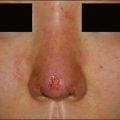31 Conclusions
Carruthers J, Carruthers A, Monheit G, et al. Multicenter randomized parallel group study of onabotulinumtoxin A and hyaluronic acid dermal fillers (24mg/ml smooth cohesive gel) alone and in combination for lower facial rejuvenation: satisfaction and patient reported outcomes. Dermatologic Surgery. 2010;36:2135–2145.
Carruthers J, Carruthers A, Tezel A, et al. Volumizing with a 20mg/ml smooth, highly cohesive viscous hyaluronic acid filler and its role in facial rejuvenation therapy. Dermatologic Surgery. 2010;36:1886–1892.
Hanke CW, Rohrich RJ, Busso M, et al. Facial soft-tissue fillers: assessing the state of the science conference – proceedings report. Journal of the American Academy of Dermatology. 2011;64(4 suppl):S53–S85.
Murray JC, Burch JA, Streilein RD, et al. A topical antioxidant solution containing vitamins C and E stabilized by ferulic acid provides protection for human skin against damage caused by ultraviolet irradiation. Journal of the American Academy of Dermatology. 2008;59:418–425.
Pinnell S. Cutaneous photodamage, oxidative stress, and topical antioxidant protection. Journal of the American Academy of Dermatology. 2003;48:1–19.
Walker Smith J, Clurman AS. Rocking the ages: the Yankelovich report on generational marketing. New York: HarperCollins; 1998.







